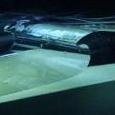Search the Community
Showing results for tags 'auto tune'.
Found 9 results
-
Hello Guys! I have couple of questions about tuning an ab servo motor. -Actually what does the drive or plc doing when I launch a servo auto tuning? - What are the little boxes like position error integrator ? There are checkmarks in fornt of the lines. Can I choose the methode or something? I mean its not "auto" ? Why it is auto then ? - Can someone send me some basic literature where they explain me what these stuff acutally meaning ? - What is the hook up test what for is good ? -When you are doing a servo auto tune what are the parameters that you are monitoring and why ? -I should do the auto without or with load ? Whats the difference ? I know there are so many question I would be so grateful if someone could help me with these answears, or even just with one. Thanks again.
- 2 replies
-
- kinetix 6000
- auto tune
-
(and 4 more)
Tagged with:
-

Load different programs on power up with compact logix
FesterMT posted a topic in Allen Bradley / Rockwell Automation
Hi All, Just wondering if anyone here has any experience with automatically loading different programs to compactlogix. I am open to any suggestions. So far we have been putting sd card slots on the main panels since the extender cables are limited in length so the customer needed to swap sd cards on a tooling plate change out before powering up. One of our customers now would like to change the tooling plate and have the plc automatically load the proper program for it. We don't want to have multiple subroutines because sooner or later the plc memory will run out. We also have put smaller plc's on the tooling plates themselves to hold the specific programming for the tooling plate and handshake with main frame but this particular customer does not want this. I would like to know if anyone has done anything with wifi sd cards in CompactLogix or loading the program automatically from a pc to sd card and then switching the sd card to the plc via some kind of sd card switch before powering back up. Any advice is greatly appreciated. Thanks in advance. -
Has anyone had issues using the Auto-Updater and Administrative Rights? I am running Windows 10 Pro, 64Bit. I need to update Sysmac Studio from 1.31 to 1.4.....when I run Auto Updater (as Administrator) I always get the error "Log on the PC as a user who has an administrative right when install" and it never makes it past the first module of the CX-One Update. I even gave the issue over to my IT guy and he has absolute full rights to every nook and cranny on my laptop. I was told that I needed to allow the CX-One to updates as well since they share some of the same components. My IT guy even tried to do the "download" and install individual modules of the update and that still didn't work. Currently waiting on callback from OMRON Tech Support, thought I'd pose the question here as well....thanks.
-
Hell PLC World! I have been trying for several weeks in my spare time at work to tune an Allen Bradley Servo Motor. Below is the list of hardware I am currently using: - CompactLogix Motion Controller (1780-L33ERM) - Kinetix 350 Driver (2097-V34PR5-LM) - MPL Series Rotary Servo Motor (MPL-B310P-MJ74AA) I have been using RSLogix5000 for testing and I plan to use it to develop a simple conveyor type program later. I have tried a list of things which will be below, but to no avail, I cannot simply jog the motor for any period of time without triggering a position, velocity or bus voltage error. I have tried changing the motor, driver and feedback cable to no avail. Here is the process I have used: 1) Add the hardware to RSLogix5000 (PLC, Driver and Motor) 2) Configure the motor 3) Run the hookup test. This works flawlessly. The motor will slowly turn independently on the feedback test for as many revolutions as I input. This is what makes me think I am doing something wrong in the tuning process. 4) Run autotune process with the velocity, acceleration and jerk set well below the limits of the hardware. 5) Attempt manually control motion 6) Recieve error I have tried changing the input from trapezoidal to S-Curve, changed velocity and position limits, manually tuned velocity gains in a myriad of configurations. I have swapped legs on the 3 phase input (which made matters worse). I suppose it is possible that multiple pieces of hardware are faulty because this equipment was previously used, but I still cannot wrap my head around why the hookup test would work so flawlessly, yet I cannot just get the servo to rotate at an equivalently low speed. If anyone recognizes my mistake, I would be eternally grateful. I am an intern studying control systems in graduate school and as popular as AB is, I would sure like to get some experience with it. Thanks in advance!
-
Dear All, I am having a problem with my cimplicity Auto Report Generation, When I Click on Generate Report, it shows "0 values collected" does anyone knows what's possibly could gone wrong here ??
- 1 reply
-
- auto report
- data logger
- (and 4 more)
-
I’m using a Omron NJ to manage a LinMot linear motor .. all is going very well; however, there have been a few times during this development phase when the actuator, or programming creates a fault, perhaps from a following error, or exceeding a limit. The result is sometimes scary. The actuator might accelerate into a hard stop. Not a big deal, the ends are protected with Sorbothane, so it isn’t a big problem .. yet. Once the system is correctly programmed, it shouldn’t ever accelerate an actuator into the hard stops. In spite of my newbie-ness to Omron programming I’m aware of the need to employ error & fault action that will stop a run-away actuator in closed-loop control, rather quickly. Just how to do that.. has evaded my research. I’ve noticed: “FaultHandler” in the W507 & W508 Manuals. And, been quite frustrated to not find any reference to FaultHandler or FaultHandeler() .. which kinda suggests it’s a program?… and also expected to get some clues in the "NJ Programming Best Practices V1.1” so far… no luck. Perhaps I’m going about this all wrong.. The LinMot Driver Controller might be the way to go.. An error message from the NJ to the LinMot drive would quickly shut down movement in closed loop .. instead of turning the motor into a rail gun… Any suggestions at how to do it with the NJ, would be greatly appreciated.. Thanks Regards, Michael PS: here’s the progress so far, thanks to many out there, and on this forum ... https://www.youtube.com/embed/B0UGm9JTw3U?rel=0
-
Hi guys! Im new in using PLC and im using CPM1A, is there a way setup the plc to run mode immediately after rebooting it, also even without connecting it to PC or handheld device? I saw in the manual "Startup Operating Module" but i am lost, i dont know how to configure it. Thanks for your advice.
-
Hello all, I was asked to check if there is a PID real - time software which automatically calculates PID loops parameters and update the PLC registers or HMI ( by OPC server etc.) when the process is working and "breathing". REAL-TIME. Not PID simulator or PID tuner based on measured data, but a software that will calculate and update the PID parameters in real time while maintaning several PID loops simultaneously. Are there any suggestions? Thank you, Olesia
-
Dear colleagues and siemens experts, I''m new in siemens. As all I make my program for PLC, but I need help with PID autotunig (pretuning) I use : 1.CPU 1214C DC/DC/DC (6ES7214-1AG40-0XB0) 2. 6ES7214-1AG40-0XB02. 16IN/16 OUT DC/DC/DC (6ES7-223-1BL32-0XB0) 3. 2x 6ES7231-5PD32-0XB0 ( 4 channel RTD analog module - PT100) We use 7(seven) Pt100 points with 7(seven) heaters ... so I need 7 additional outputs..... [you can see example of wiring in attached pic 6es7231-5pd32-0xb0-modules.jpg] Maximum heating point is around 220 degrees. I make my configuration for PID_Compact : 1. Basic settings 1.1 Controller type : Temperature : °C Set mode to : Pretuning ( sometimes I make it Automatic mode) 1.2 Input_Per(analog) -----> Output_PWM 2.Process value setting: 2.1 Process value limits: Process value high limit : 220.0 °C 2.2 Process value limits: Default 3. Advance setting 3.1Process value monitor : Default 3.2 PWM limits Minimum ON time : 0.5 sec Minimum OFF time : 0.5 sec 3.3 Output value : Default 3.4 PID parameters : Default I start Commissioning with these steps : 1. Measurement : Sampling time 0.5 Start 2. Start PID_Compact 3.Tuning mode : Start When I try first time my setpoint was 90 degrees , second time I try with 120 degrees. After 4-5 hours it stop more in Progress bar it stop when I reach a little more then 50%, and I stop PID. For heaters it is not normal to process to be 4-5 hours, there have some wrong. Example with 120 degrees : During process I make : When Input_PER reach 120[1200] degrees I stop physical access to heaters. When Input_PER reach 100[1000] degrees I start physical access to heaters So 4-5 hours is soo long time for this type process. Time to reach 120 degrees from 100 degrees is around 2-3 min. Time to fall from 120 degrees to 100 degrees is around 4-5 min. Total time for one whole cycle around : 8min. Sometimes when I set setpoint to 140, 150 degrees it writes me that output set value is to high after I give Start Pretuning ? Even sometimes when try for 120 degrees .... As all I want to start PID pretuning (autotuning) with setpoint 140 - 150 degrees. Which are minimum requirement to start PID autotuning with PID_Compact ? Could you send me some very simple example and steps that I must make or only steps ? I attached files in dropbox with images and program example, because I can't attached nothing here. This form don't give me access to attached something. So link is here : Even program is there. Thanks in advance Best regards : Altan
- 1 reply
-
- PID
- autotuning
-
(and 8 more)
Tagged with:


